A city trip doesn’t always have to be a big name: Why not Salamanca, a lively student town in eastern Spain? It was once considered a stronghold of conservatism. Now it becomes modern.
Salamanca is about a two-hour drive from the capital, Madrid, in eastern Spain. Here the Roman bridge and the medieval church towers shine in the evening light.
Changing rhythms, weird tones. The city music of Salamanca dares something new. “No, that didn’t exist here before, they played traditionally,” says conductor Pablo Bueno. “We do a little what we want, what the students like.” Most of the musicians are young women, there are also young men, and there are also a few older students.
The musicians put together their repertoire themselves, the conductor writes the arrangements “for the instruments that we have”. The “banda municipal”, actually a form of marching music, mainly consists of brass and timpani. The audience likes the experimental music. The walls of the Old Cathedral shimmer in the evening light, massive and golden.
The golden monuments of Salamanca stand immovably in their place: the Plaza Mayor, the university, the churches, the Roman bridge. The city is a stronghold of Spanish conservatism, and at first glance it has hardly changed in the last forty years. Yes, there are some innovations: An extensive pedestrian zone with restaurant terraces invites you to stroll. Ruins were restored, vacant lots filled. Only a few house facades with empty window holes are left, they are supported by metal scaffolding. In the past, dilapidated houses sometimes simply collapsed, leaving a pile of stones, guarded by the fire brigade.
The City of Language
“The city has dressed up,” says Teresa González, director of the Colegio de España language school. She begins to rave: “Salamanca is a wonderful monumental city, but at the same time a comfortable small town.” 140 000 inhabitants has the city, manageable. This is favorable for the many language students, some of whom are only 14 years old. You can find your way around quickly, you feel safe. And yet this city offers a lively nightlife in the dozens of bars and discotheques, especially for students.
For the language teacher, Salamanca is also «the city of Spanish language». The inhabitants of the city, the Salmantinos, make this claim as a matter of course. You can discuss linguistic characteristics and variants here for hours, in every bar, even outside of the academic milieu. But there is a sensitive reaction when it is postulated that modern Spanish is perhaps more defined by the songs of the Colombian singer Shakira than by the language administrators in the Castilian plateau.
Because the Salmantinos remain convinced: Salamanca sets the standard. This is where the Centro Internacional del Español is located. It gets its new, pompous headquarters in the former branch of the Spanish central bank. They also claim the new Observatorio Global del Español. This is where it belongs, not in the Rioja vineyards in the far north, where the central government in Madrid wants to build another Centro. And against that the mayor of Salamanca, Carlos Garcia Carbayoetched, the Centro would suit the inland region as well as a sailing center.
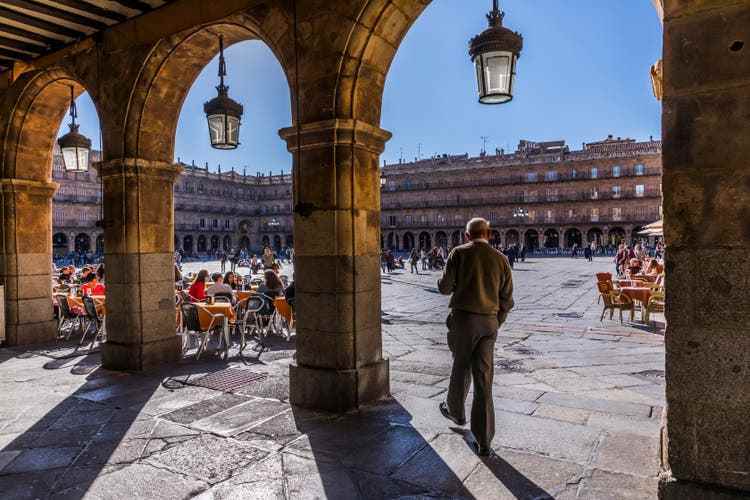
The Plaza Mayor is considered one of the most beautiful in Spain. It is the starting point of every pleasure in Salamanca.
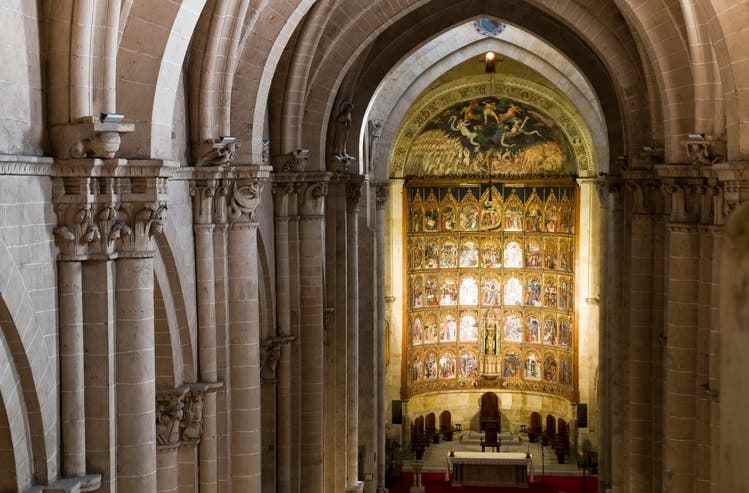
Inside the Old Cathedral, the Gothic painting has been largely preserved. Here the main altar.
Congress tourists become culture tourists
Immediately adjacent to the old town, you have that convention center placed. A large cube, well-proportioned and windowless. That’s thirty years ago. Congress tourists are also culture tourists, they easily switch between monuments and presentations, everything is within walking distance. This used to be the gypsy quarter, called «barrio chino», with ramshackle houses and muddy streets. The former residents were resettled on the outskirts of the city.
The convention center helps ensure that Salamanca’s hotels have good occupancy rates all year round. 85 percent were there «Hotel Eurostars Las Claras» according to the head of reception, José-Luis Jiménez, before the Corona pandemic. The slump caused by the pandemic now seems to be over, business is starting to flourish again, although reservations are still made at very short notice.
Salamanca has been on the list of the Unesco World Heritage, In 2002 it became the European Main cultural capital. That was a turning point. On the one hand, Salamanca was definitely established as a destination for international tourism, on the other hand it became clear that the old town could not handle all the events at all. Bustle was everywhere and anytime.
“It was too much of everything,” says urban planner Gregorio Vázquez. With his office planz he then worked out proposals for better space management on behalf of the city administration, a “plan de gestión”. This initially disappeared in a drawer until it was later implemented in parts. “Tourists, students, residents, innkeepers, tradespeople, civil servants – you have to find a balance between different interests and needs.” In addition to busy streets, there is a need for quiet zones, such as inner courtyards. In most cases, flexible solutions are better than rigid standards: “You can try things out and make corrections. At the end of the day, it’s about quality of life.”
However, according to Gregorio, there is no “great agreement” in Salamanca on the question of where the city should head. The state, the region, the city, the university all had their own goals. Some of the competences and responsibilities are not clearly defined. “A city is a complex system. Planners can make suggestions. But the players and users will decide.”
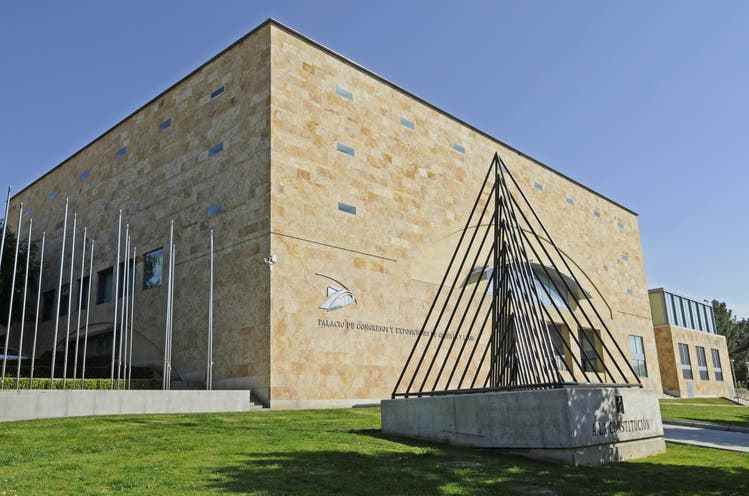
The Congress Palace, opened in 1992, sets an urban contrast. The monument “To the Constitution” was banned from the center.
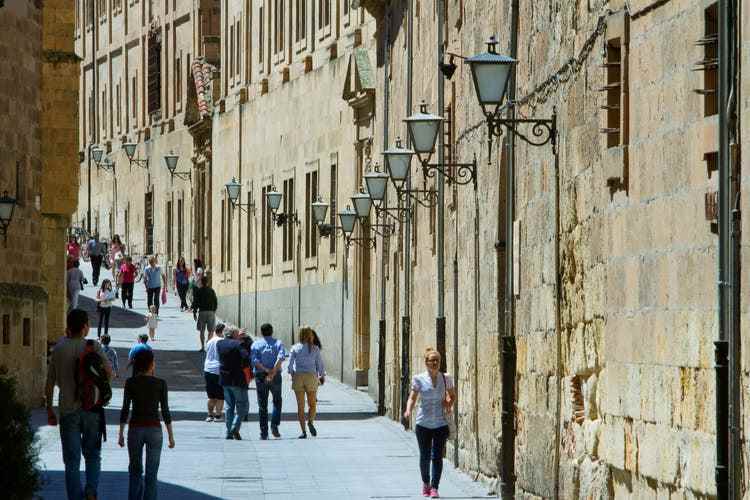
The local sandstone isn’t particularly strong, but gives the town its golden glow.
The Roman bridge that crosses the Tormes River is also symbolic of this. With more than twenty arches, the Puente Romano stands elegantly and solidly, and has done so for 2000 years. As recently as the 1970s, cars and trucks rolled over it, and the riverbanks were practically inaccessible. Today the shore is lined with an extensive green zone for joggers and walkers. Low costs, great gain in quality of life. The plans for this had been around for a long time, but it took a long time to be realised.
The city has grown beyond the river to the south, where malls at the exits of roundabouts lure shopping. In the former farming villages to the west, higher earners have their single-family homes, they commute by car and are regularly stuck in traffic. In the urban areas in between, around the city center, predominantly low-income residents live. In blocks of flats, some of which were built in the 1950s.
Study and hike, party later
They also live in these intermediate zones 22 000 students at the university, in dormitories or shared flats. Year-end exams are now. In the Residence «Cum Laude» four young people cramme in a windowless, musty room on the fourth floor, images of lung pathologies flash across the screens. Others lock themselves in their rooms with headphones in their ears. They also study at night. There is little or no time for the fiesta.
The University of Salamanca, founded in 1218, is one of the oldest universities in the world. The discovery of America was prepared here, the foundations of modern chronology, the theory of gravity, human rights were conceived here, according to the official historiography of the university on posters. It was also the Jesuits who invented the market economy in Salamanca, not the Protestants.
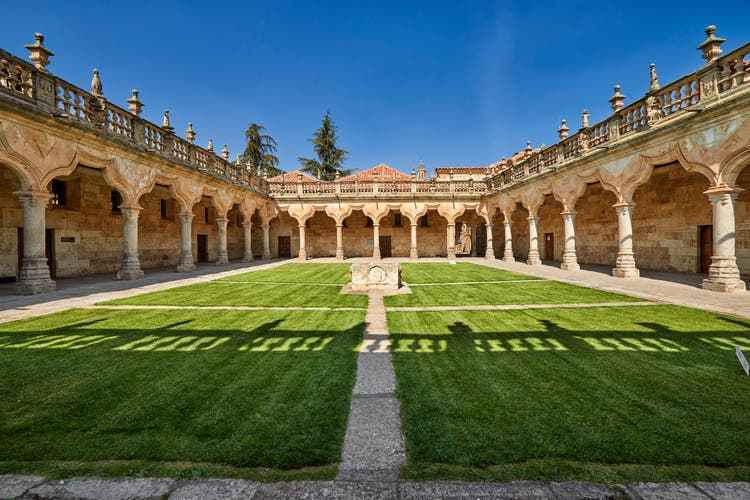
Courtyards are places of retreat and rest.
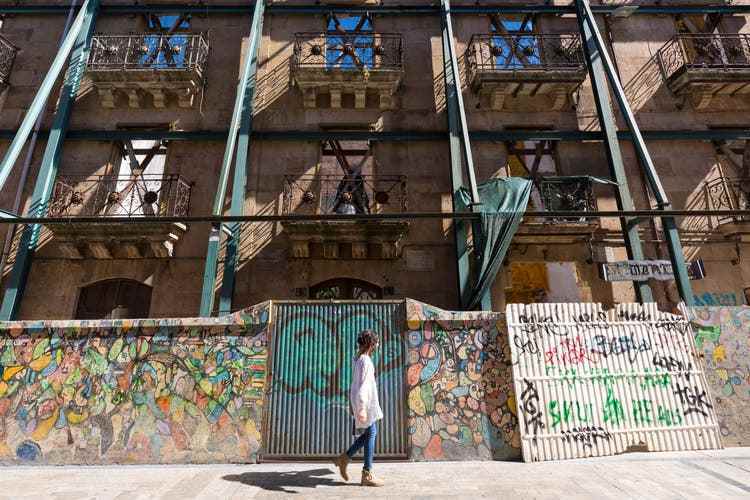
Crumbling facades, hollow inside: this house on Rua Mayor in the old town is still waiting for renovation.
The university is the most important economic factor in the city, ahead of tourism. In the international rankings, it is in the Spanish midfield, but it still attracts young people from many parts of the country. Three quarters of the students come from outside. This gives the conservative city an open flair.
For several years, the university has offered a master’s degree in tourism. Some students even come from China. Professor Javier Melgosa is committed to sustainable tourism. In the plains and mountains of Salamanca and Ávila, cultural tourists, spiritually saturated by monuments of architectural history, could discover sensual culinary delights, such as local wines and Iberian ham. “Plaza Mayor and ham that pulls,” says the tourism expert.
Trendy pubs have established themselves in the extended commuter belt around Madrid. “Turismo rural” with overnight stays on the farm generates income even in remote areas. And “turistas de alpargatas”, hikers with straw sandals, seek retreat between religion and art. The traveling exhibition «Edades del hombre» has, according to Melgosa, given new fame to some small towns with beautiful churches.
Dangerous drink in the ghost train
Finally there is “Manchada” in the “Bolero” bar: lots of schnapps on ice, plus a little sweet wine, a dangerous mixture. The gloomy bar in a narrow cul-de-sac still looks exactly the same as it did a good forty years ago, when Spain slowly transitioned from Franco’s dictatorship to democracy. Dark brown counter, dead fan, “Guernica” hangs on the wall, the world-famous Picasso painting about the massacre during the dictatorship. It was a political statement at the time.
“It’s like time travel. The owner doesn’t want to change anything,” says the young barman. However, the smell of cigarettes and fat is missing, the noise of music and conversations is missing, there is no crowding in and in front of the bar. “Drinks are forbidden outside,” says a sign. No students, no tourists, at least that day. The “Bolero” seems out of fashion, a monument without an audience right next to the Plaza Mayor.
Public transport is not a priority
aww. · Almost every provincial capital in Spain is connected to the high-speed rail network. Not so Salamanca. The train station is on the outskirts of town. It resembles an oversized KFC shack with a siding, you can find the chickens from Kentucky quickly, you have to look for the trains. There is not a single train to Madrid’s main train station, Atocha; three trains a day to the suburban station of Chamartín will have to suffice. Public buses, on the other hand, run hourly via the motorway to Madrid, the bus station is elsewhere on the outskirts.
Salamanca is an important station on the route from France to Portugal. But the train to Lisbon is a rumble line. And the connection to Porto, exhilaratingly beautiful along the Douro River, was cut on the Spanish side. Today you can visit disused railway stations and empty villages in the Castilian plateau and take a hike on the old railway line. It needs a car, with the public bus it will be difficult.
